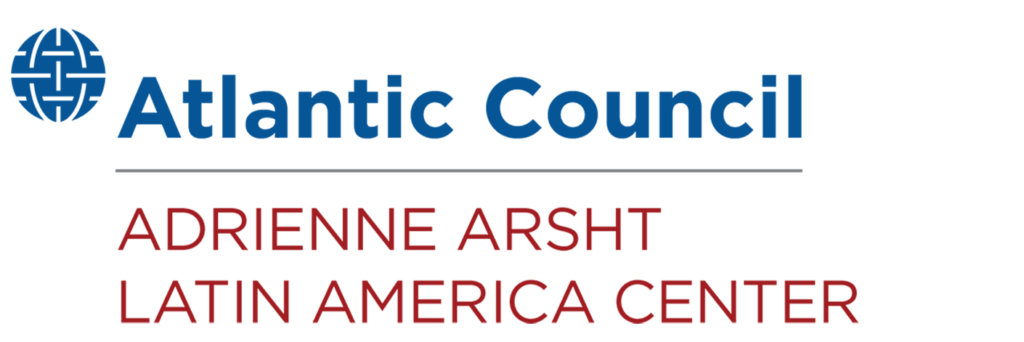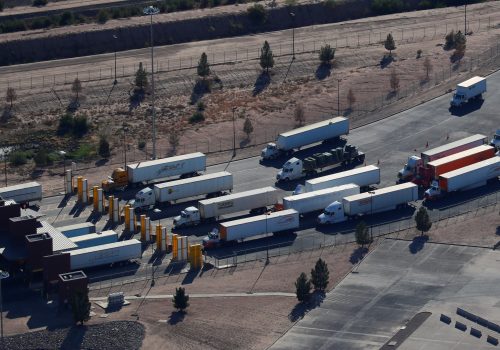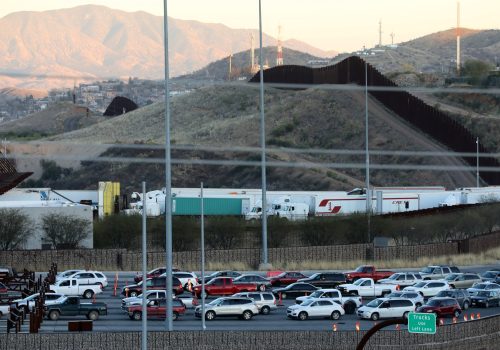Beyond the US-Mexico border: Destination of final goods, environmental impact, and future scenarios for border relations
Three complementary analyses to a two-part US-Mexico border report.
A joint analysis by the Atlantic Council’s Adrienne Arsht Latin America Center, the University of Texas at El Paso’s Hunt Institute for Global Competitiveness, and El Colegio de la Frontera Norte.

Analysis 1
US-Mexico commerce: Tracking the final destination and Mexico’s fiscal benefit with greater border efficiency
By Edgar David Gaytán Alfaro, John Gibson, Mayra Maldonado, Jason Marczak, Roberto Ransom, and Ignacia Ulloa-Peters
This report determines the value and final destination of northbound commercial trade flows. Based on limited data, it finds that 45 percent of trade entering the United States remains in border states (Arizona, California, New Mexico, or Texas), while 55 percent is distributed to other regions across the United States. It also evaluates the tax revenue collected by Mexico’s six border states (Baja California, Chihuahua, Coahuila, Nuevo León, Sonora, Tamaulipas) stemming from increased efficiencies at the border. Read our report to find out more about the top 5 receiving states, as well as the economic impact that different regions across the United States would experience following a 10-minute reduction in wait times.
Analysis 2
Our border environment, water, and air pollution
By The Hunt Institute for Global Competitiveness, University of Texas at El Paso
This environmental impact analysis evaluates the impact idling vehicles have on water and air pollution across the US-Mexico border. Reduced wait times can significantly reduce particulates in the air and water, which currently pose a significant threat to the health of people living in border communities. To find out more about the potential reduction in pollution following decreased wait times, read our report or view our infographic.
Analysis 3
Border 2033: Three scenarios for the United States and Mexico
By Peter Engelke, Deputy Director of Foresight, Scowcroft Strategy Initiative; and Nonresident Senior Fellow, Global Energy Center, Atlantic Council
Foresight scenarios help us tell stories about how the future might unfold and are intended to stir imaginative thinking. In this report, we portray three scenarios of a world that might exist ten years from now in 2023 based upon uncertainties in the United States and Mexico’s relationship today. More specifically, we hypothesize what the US-Mexico relationship would look like if 1) there is little to no change in the manners that the United States and Mexico engage, 2) fears over border security leads to an increasingly hardened border, and 3) Mexico and the United States increase collaboration on border issues. Find the full report below.
Read our two-part US-Mexico Border report
Made possible by


The Adrienne Arsht Latin America Center broadens understanding of regional transformations and delivers constructive, results-oriented solutions to inform how the public and private sectors can advance hemispheric prosperity.
Image: Trucks are seen on a bridge intersection near the World Trade Bridge border, in Laredo, Texas U.S. June 3, 2019. REUTERS/Carlos Jasso

